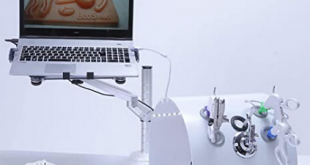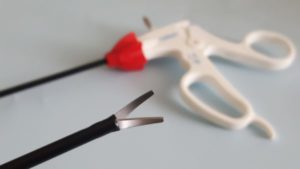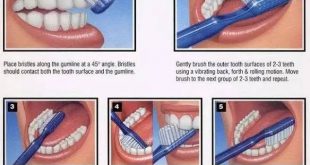ABSTRACT
Introduction
The objective of this study is to assess the usefulness of a surgical skills evaluation system based on movement analysis of laparoscopic instruments.
Click here: Laparoscopic Needle Holders
Method
This system consists of a laparoscopic physical simulator and a tracking system and technical skills assessment in laparoscopy. Six experienced intermediate surgeons (between 1 and 50 laparoscopic surgeries) and 5 experienced surgeons (more than 50 laparoscopic surgeries) participated in this study. All participants were correct. The materials reiterated a cut on synthetic tissue with the right hand, dissolved gastric systemic layer, and a weighted task in the previous dissection. Objective metrics were analyzed such as time, path length, speed of movements, acceleration and smoothness of movement for instruments of each hand.
Results
In the cut task, experienced surgeons show less acceleration (P = .014) and move more easily (P = .023) using the scissors. For the dissection activity, experienced surgeons (P = .006) and less lengths of the two instruments do not need less time (P = .006 for dissector and P = .01 for scissors). ). In the weighted task, experienced surgeons (P = .037) and the distance traveled (P = .041) by the dispenser require less time.
Conclusions
This study shows the usefulness of the evaluation system to cut, deter and consolidate tasks. It is a significant step in the development of advanced systems to train and assess surgical skills in laparoscopic surgery.
SUMMARY
Introduction
This paper studies the usefulness of a surgical skills evaluation system based on analysis of movements of laparoscopic instruments.
Method
The system consists of a laparoscopic physical simulator and a monitoring and evaluation system for technical surgical skills. The study involved 6 medically experienced surgeons (between laparoscopic interventions between 1 and 50) and 5 specialist surgeons (more than 50 laparoscopic interventions), all with the right hand as dominant. All 3 materials repeated a cut task with the right hand in synthetic tissue, dissolving the gastric serosa and seamlessly in the dissection made. For each exercise, the parameters of the time, distance traveled, speed, acceleration and smoothness of movement were analyzed for both manual instruments.
Results
In the cutting task, specialist surgeons show a lower acceleration (p = 0.014) and greater speed in movements (p = 0,023) in the use of scissors. For the dissection activity, specialist surgeons (p = 0.006) need less time and travel less distances to both instruments (p = 0.006 for respiration and p = 0.01 for scissors). In my task, expert surgeons have run less than middle-level surgeons (p = 0.037) and travel less along the discourse (p = 0,041).
Conclusions
The evaluation system was useful in cutting, dissolving and mitigating tasks and represents progress in the development of advanced training systems and evaluation of laparoscopic surgical skills.
Introduction
Surgical surgery is laparoscopic surgery with high technical requirements for the surgeon, including the use of new instruments, 1 the tactile feedback, the reverse movement effect (called “fulcrum effect”), and loss of depth. This is a major challenge for the Surgeon, for example, getting new motor skills to be trained in achieving safe surgical procedures.
It would be useful to know the psychomotor skills of surgeons undertaking training as an essential part of the assessment of surgical competence. For this reason, authors, surgeons and associations have a greater demand for the development of assessment tools to verify that surgeons are technically competent.
In order to meet this requirement, we have developed a number of training systems and a surgical assessment to put the patient at risk, favoring their use outside the clinical environment, as well as the objectivity and automation of surgical assessment processes. In the main, these systems are categorized into 2 large groups: physical and physical systems.6 In this paper, we will focus on physical training and surgical assessment systems because of their greater realism in the use of instruments, and in the interaction with the Currently, systems are available with a number of features and applications, including commercial and academic aspects. However, there is no system that is universally or recommended as an objective tool for assessing surgical skills.
An analysis of instrument movements is an effective means of objectively assessing the psychosocial skills of the surgeon. During the learning task, the person makes more effective movements when mastering this task. electromagnetic, mechanical, optical) for tracing instruments during the assessment activity.
Different parameters based on the movement of laparoscopic instruments have been analyzed by different authors for the objective assessment of the technical skills of the surgery. These parameters can predict the surgical level of accuracy using certified scales. Using it to differentiate between surgeons with different levels of experience, it is necessary to find out which of these is essential to assess each task.
The main objective of this study is to analyze the usefulness of systems to assess psychomotor skills in laparoscopic surgery, based on laparoscopic instrument movement analysis. This study was carried out in 2 surgical groups who have different experiences of laparoscopic surgery by doing a series of basic training tasks using a simulator, including synthetic tissue cutting, gastric standby dissection, and organic tissue seamlessness.
For more information visit our website Laparoscopic Needle Holders





